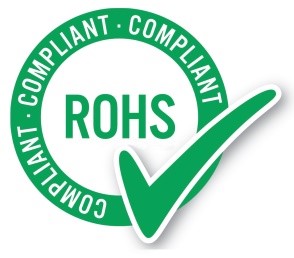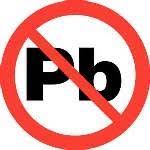The Restriction of Hazardous Substances (RoHS) directive 2002/95/EC began as a European movement to decrease the deposition into the environment of known carcinogens and to enhance the recyclability of mixed-material waste. The goal was to create a new generation of electrical products that are free of substances hazardous to health and the environment.
Initially all companies that manufacture, import or rebrand electronic equipment destined for sale in Europe were required to ensure their products comply with RoHS guidelines. Exemptions were granted when life could be put at risk including medical and military applications. Following on the heels of these restrictions and based on similar research, US regulations are now coming into effect.
RoHS focuses on six substances. Lead (solders), hexavalent chromium (anti-corrosion and colorant), cadmium (phosphor, colorant and battery), mercury (batteries), polybrominated biphenyls and polybrominated diphenyl ethers (both flame retardants).
Of universal concern to circuit board users is the lead content of HAL solder, solder paste, and wave solder. When the regulation first hit many companies prepared to run pure tin (Sn) at a higher than normal reflow temperature and so changed the board base composite to a high Tg (170°C-180°C) . This proved to be a costly fix and subsequent trials by manufacturing engineering showed that standard FR-4 performed adequately with the lead-free solders..
Solder alternatives have been studied by the EPA whose findings indicate that for lead-free solders, the tin/copper alternative had the lowest (best) scores. For solder pastes, bismuth/tin/silver had the lowest impact scores among the lead-free alternatives in every category except non-renewable resource consumption.
For both paste and bar solders, all of the lead-free solder alternatives had a better life cycle assessment of leachability score in toxicity categories than tin/lead solder. This is primarily due to the toxicity of lead, and the amount of lead that leaches from printed wiring board assemblies.
Recently the demand for RoHS components has grown so that in many industries that certification has become the norm. As the RoHS manufacturing lots increased in size the surcharge decreased. Today there is little if any cost penalty in meeting the RoHS compliance on both bare and reflowed PCBs.
Today the largest cost increase in running RoHS circuit boards is a solution without a problem – costly high Tg (170-180°C) substrates. Initially reflow ovens were cranked up to flow the lead-free solder paste and that caused warpage and other issues. However a couple years’ experience and a better heat profile gets the job done using the standard Tg 135°C. Costs have dropped back to SnPb solder days.
USTEK Inc. has worked closely with both contract manufacturing and OEM partners to ensure that RoHS compliance is achieved with maximum product performance and at the lowest possible cost. We are actively seeking additional client-partners. May we support your work in RoHS compliance?

Comments are closed